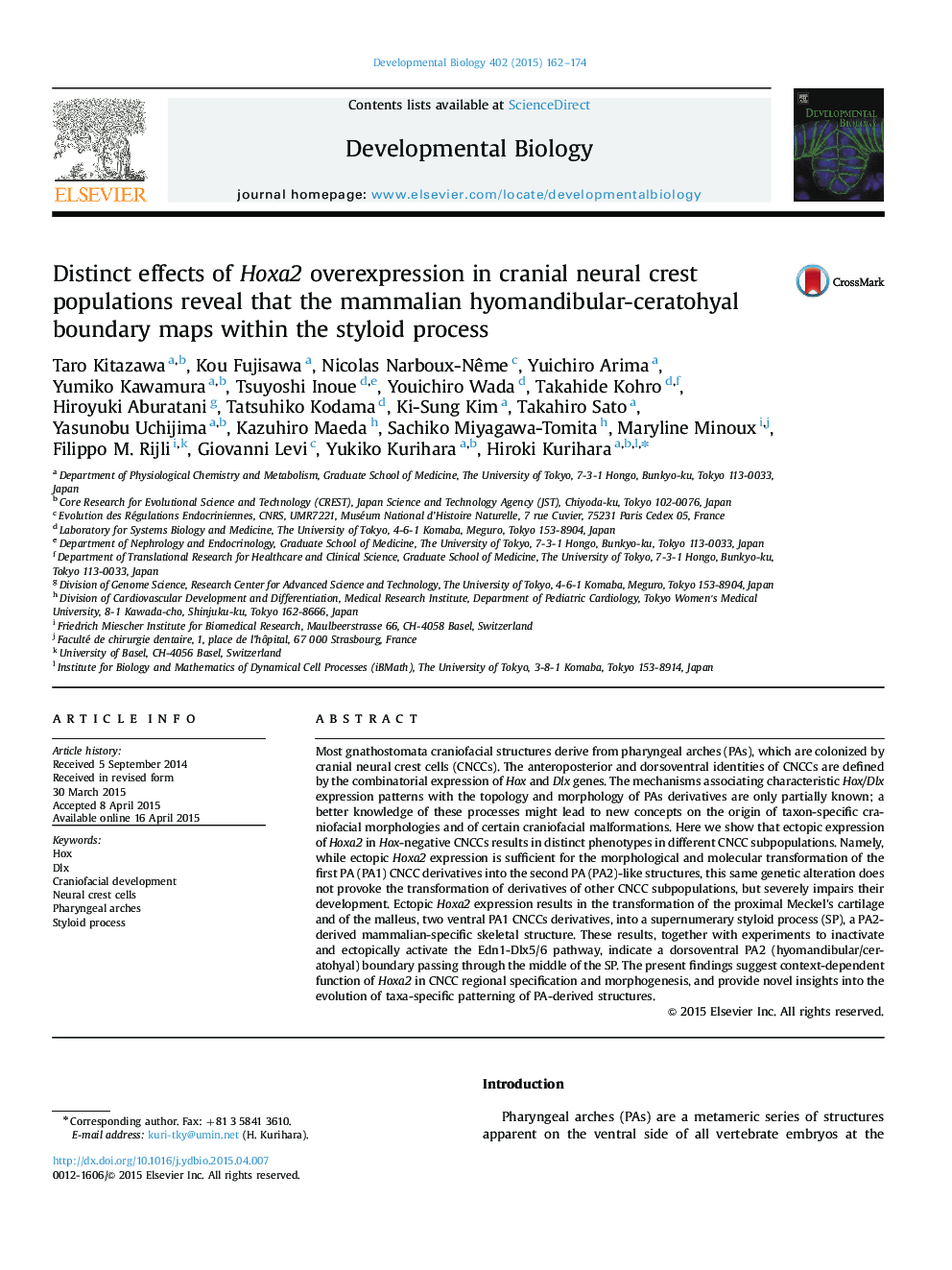| Article ID | Journal | Published Year | Pages | File Type |
|---|---|---|---|---|
| 10931338 | Developmental Biology | 2015 | 13 Pages |
Abstract
Most gnathostomata craniofacial structures derive from pharyngeal arches (PAs), which are colonized by cranial neural crest cells (CNCCs). The anteroposterior and dorsoventral identities of CNCCs are defined by the combinatorial expression of Hox and Dlx genes. The mechanisms associating characteristic Hox/Dlx expression patterns with the topology and morphology of PAs derivatives are only partially known; a better knowledge of these processes might lead to new concepts on the origin of taxon-specific craniofacial morphologies and of certain craniofacial malformations. Here we show that ectopic expression of Hoxa2 in Hox-negative CNCCs results in distinct phenotypes in different CNCC subpopulations. Namely, while ectopic Hoxa2 expression is sufficient for the morphological and molecular transformation of the first PA (PA1) CNCC derivatives into the second PA (PA2)-like structures, this same genetic alteration does not provoke the transformation of derivatives of other CNCC subpopulations, but severely impairs their development. Ectopic Hoxa2 expression results in the transformation of the proximal Meckel's cartilage and of the malleus, two ventral PA1 CNCCs derivatives, into a supernumerary styloid process (SP), a PA2-derived mammalian-specific skeletal structure. These results, together with experiments to inactivate and ectopically activate the Edn1-Dlx5/6 pathway, indicate a dorsoventral PA2 (hyomandibular/ceratohyal) boundary passing through the middle of the SP. The present findings suggest context-dependent function of Hoxa2 in CNCC regional specification and morphogenesis, and provide novel insights into the evolution of taxa-specific patterning of PA-derived structures.
Related Topics
Life Sciences
Biochemistry, Genetics and Molecular Biology
Cell Biology
Authors
Taro Kitazawa, Kou Fujisawa, Nicolas Narboux-Nême, Yuichiro Arima, Yumiko Kawamura, Tsuyoshi Inoue, Youichiro Wada, Takahide Kohro, Hiroyuki Aburatani, Tatsuhiko Kodama, Ki-Sung Kim, Takahiro Sato, Yasunobu Uchijima, Kazuhiro Maeda,
